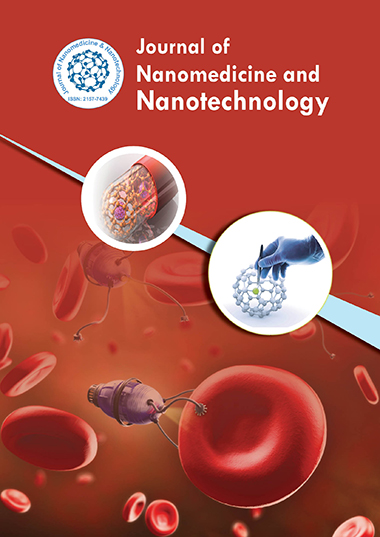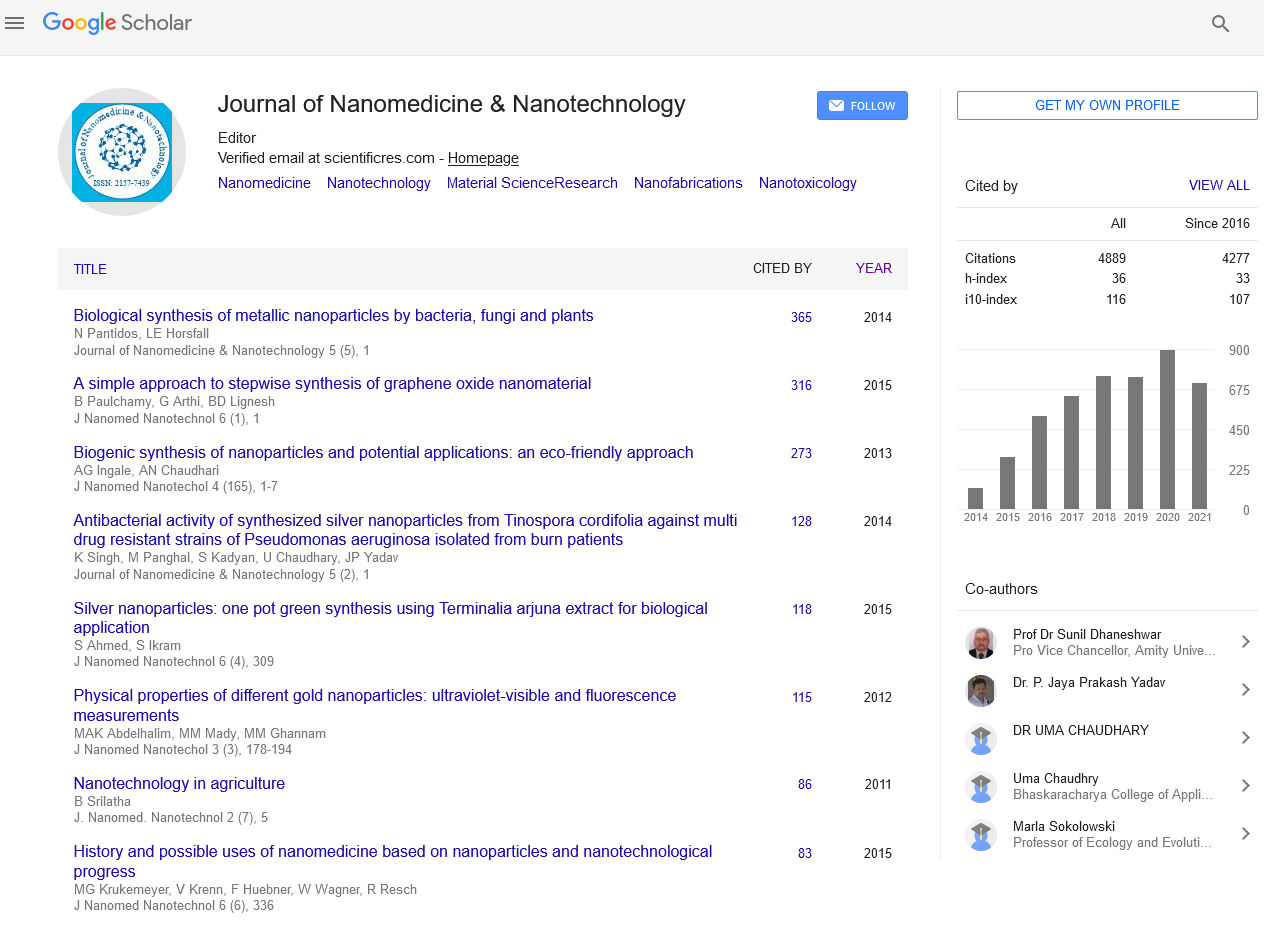Indexed In
- Open J Gate
- Genamics JournalSeek
- Academic Keys
- JournalTOCs
- ResearchBible
- China National Knowledge Infrastructure (CNKI)
- Scimago
- Ulrich's Periodicals Directory
- Electronic Journals Library
- RefSeek
- Hamdard University
- EBSCO A-Z
- OCLC- WorldCat
- SWB online catalog
- Virtual Library of Biology (vifabio)
- Publons
- MIAR
- Scientific Indexing Services (SIS)
- Euro Pub
- Google Scholar
Useful Links
Share This Page
Journal Flyer

Open Access Journals
- Agri and Aquaculture
- Biochemistry
- Bioinformatics & Systems Biology
- Business & Management
- Chemistry
- Clinical Sciences
- Engineering
- Food & Nutrition
- General Science
- Genetics & Molecular Biology
- Immunology & Microbiology
- Medical Sciences
- Neuroscience & Psychology
- Nursing & Health Care
- Pharmaceutical Sciences
Upconversion nanoparticles and organic dyes for the conversion of NIR radiations to visible light for solar cell applications
2nd World Congress on Nanoscience and Nanotechnology
August 10-11, 2018 Osaka, Japan
Abhijit P Jadhav
Ewha Womans University, Republic of Korea
Posters & Accepted Abstracts: J Nanomed Nanotechnol
Abstract:
The absorption of maximum energy from the solar spectrum can be helpful to enhance solar cell efficiency. Most of the solar spectrum techniques rely on high energy UV visible spectrum, which is about 48% of the solar spectrum and remaining 52% IR radiations are not much used. Various light conversion materials such as Upconversion Nanoparticles (UCNPs), Quantum Cutting (QC) phosphors and Luminescent Solar Concentrators (LSC) in the form of quantum dots and organic dyes are used to increase solar cell efficiency. These materials have an absorption wavelength in NIR region and with the help of energy transfer mechanism; they transfer their energy to the neighboring transition metal and finally shows the emission in the visible range as per requirement. The rare earth dopant such as Yb, Er, etc. absorbs lower energy IR radiations and passes them to co-dopant (lanthanides) ions. The excited state photon successively moved to the similar energy level of transition element and later reaches to ground state with visible light emission. Sometimes, for increasing absorption of multiple IR photons into a single visible light photon and transferring energy to the lanthanides more efficiently certain organic dyes are used. Organic dyes can act as solar concentrator at the molecular scale and help to channel energy from NIR photons into the nanoparticles. The organic dyes can absorb broadband NIR wavelength and transparency to visible light. The organic dye is unstable to direct sunlight and thus have limited use. The protection of dyes using various polymers can be helpful for them to sustain for a longer time and be able to absorb more NIR photons successively.
Biography :
E-mail: abhi2kiran@gmail.com


